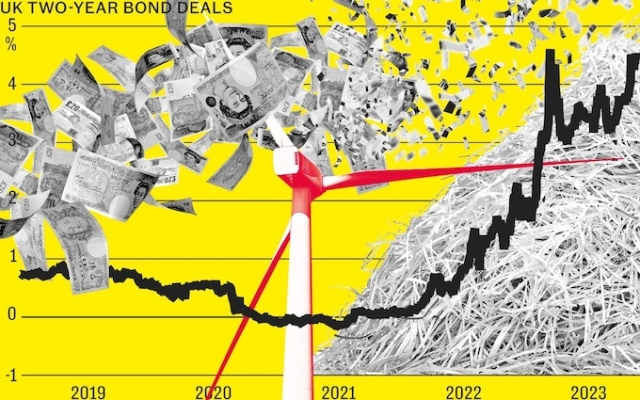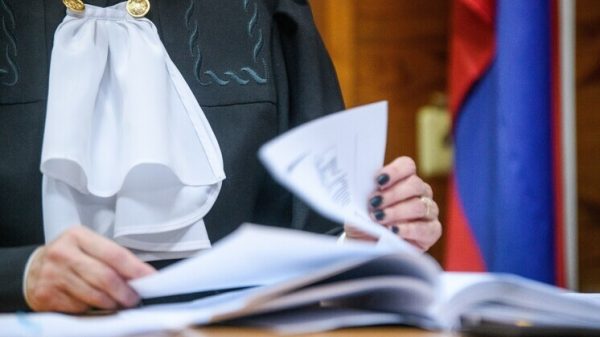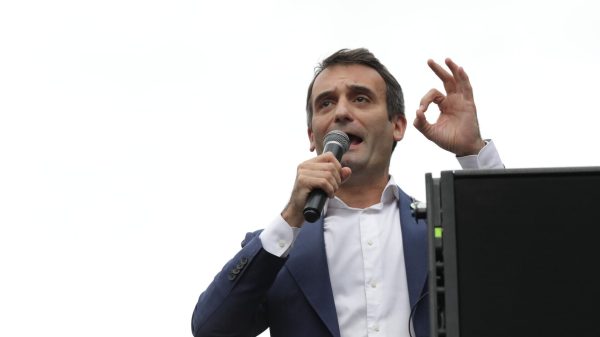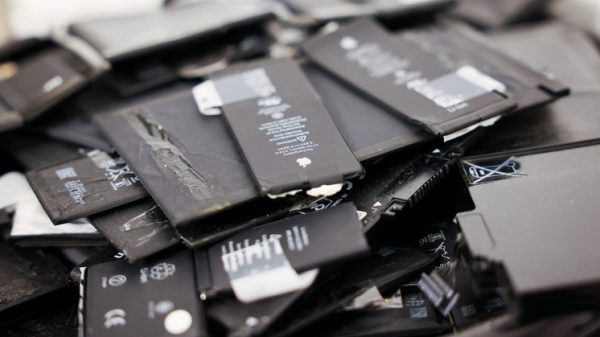
By taking the stage in Brighton to address GMB members, Sir Keir Starmer tried to quell the scandal over Labour's green energy plans with promises of «good union jobs.»
But what he omitted from Tuesday's speech was almost as revealing as what he put in.
There was no mentions what until recently was Labour's main promise: a plan to borrow £28bn a year — for five years — and invest in clean energy infrastructure.
Overall, the Green Prosperity Plan could have allowed the Starmer government to borrow a whopping £140bn if his party had won. It was designed to cover the country with wind farms and solar panels that Sir Keir and his party believe will generate energy, jobs and growth. finance at a time when the market crash caused by Liz Truss' «mini-budget» is still fresh in the collective memory.
On Friday, Labour's plan was cancelled. Shadow Chancellor Rachel Reeves blamed the turnaround on the Tories, who she said «broke our economy».
She said on BBC Radio 4's Today: The Conservatives have ruined our economy, causing interest rates have risen 12 times, inflation is now at 8.7%, and I have always said that our fiscal rules are non-negotiable.
“Economic stability, financial stability should always come first, and that goes for Labour. That's why it's important to scale up and scale up our plans in stages to get the investment we need to keep these jobs, to keep them in line with these fiscal rules, to reduce debt as a share of GDP, and to balance day-to-day activities. expenses».
Labor's plan depended on the support and goodwill of strangers: to borrow that kind of money, the government would enter international markets, probably by issuing government bonds (also known as securities).
Shadow cabinet members are said to have grown increasingly nervous in recent months that borrowing such a large amount looks like waste amid rising interest rates.
Complicating the picture is the fact that the Bank of England is embarking on a sale program bonds after more than a decade of buying bonds to support the economy. A more saturated market means that bond investors will want higher returns on their loans.
0906 Net debt as a percentage of GDP
At the very least, economists say, that would make it harder for Shadow Chancellor Rachel Reeves to stick to her «fiscal rule» of reducing government debt as a share of the economy without cutting spending or raising taxes. /p>
At worst, some in the city fear that Labor's plan could lead to a debt crisis similar to the one seen last September.
“The budgetary reserves that the Chancellor is trying to maintain are around £30bn. «says Carl Williams, Associate Director of Research at the Center for Policy Studies (CPS).
«If you borrow £28bn, you basically destroy it all. to stay within the fiscal targets that were designed to try to calm the markets.
«So this is tax hike territory.»
Labour's plans for spending on green energy were first announced by Reeves with great fanfare at the party's annual conference almost two years ago.
They will include borrowing tens of billions of dollars to invest in projects, according to the Financial Times. necessary for the UK's clean energy transition, including subsidies for wind farms, home insulation, electric vehicle battery factories and a new generation of nuclear power plants.
This will be linked to a policy to have the entire electricity grid go «net zero» by 2030 (five years earlier than the Conservatives had promised), as well as a plan to create a state-owned Great British Energy company that will invest in and participate in energy schemes. .
“We will provide confidence and leadership in this pivotal decade. I will be a responsible chancellor,” Reeves told party colleagues in 2021. “I will be Britain's first Green Chancellor.”
Since then, the fiscal environment has changed dramatically.
First and foremost, the Government still repents of the fiscal policies of the short-lived Trouss administration, which led to the collapse of the bond markets. The 'mini budget' that unveiled £45bn of unfunded tax breaks aimed at stimulating the economy, but in this case simply caused borrowing costs to skyrocket.
0906 UK two-year bond yield
One of the key questions facing Labor is whether their own loan proposals will be taken with more credibility. The answer depends on whether investors believe that the increase in party spending will actually undermine the economy with rocket boosters.
“There is an argument about the effectiveness of public sector spending,” says Simon French, managing director of Panmure. Gordon.
In September, investors did not consider the mini-budget to be an «efficient use of public resources», which he said sparked market skepticism and demands for higher returns.
James Alexander, Executive Director of the British Sustainable Investment and Finance Association, which represents fund giants such as Abrdn, M&G, Aviva and Fidelity, argues that borrowing for renewable energy investments is a different proposition.
“The Mini Farm Budget was an instant announcement of absolutely huge amounts of loans and tax cuts at the same time, which no one expected,” he explains.
“It took everyone by surprise, and there was a very strong feeling that this it wasn't worth the cost, so there were a lot of factors that scared the markets very, very quickly.”
In the case of Labor, many didn't. I don't think the UK government will have much of a problem handing over £28bn of additional bonds to investors, especially pension funds.
“Pension funds serve millions and millions of retirees, and they are all getting older,” says Steve Webb. , former Minister of Pensions, now a partner in the consulting firm Lane Clark & Peacock.
“Therefore, the underlying demand for bonds will grow, regardless of who is in power. It's hard to believe that the UK government couldn't move a significant amount of bonds if it really wanted to.»
A more difficult issue for Labor may come in the form of interest rates. When Reeves executed her borrowing plan, the Bank of England's base rate was at a record low of 0.1 percent.
Today it stands at 4.5 percent and investors expect further increases to peak at 5. 5 percent. .
0906 Interest on debt as a percentage of GDP
At the same time, Threadneedle Street moved from a net buyer of bonds to a net seller, a process known as quantitative tightening.
This means that the supply of gilt has increased, so private sector buyers will demand higher yields.
The net effect of all this is higher borrowing costs for the UK government in international markets, says CPS's Williams.
p>
In general, the Labor plan could increase the interest on the public debt. burden of £4.4 billion a year, according to the Center for Economics and Business Research.
Professor Jagjit Chadha, director of the National Institute of Economic and Social Research, says: “In an environment of sluggish economic growth, high debt burdens and rising securities yields, it will be quite difficult for the financial market to achieve a significant increase in debt issuance. swallow.
Even successful debt-raising comes with risks. Public sector borrowing is already at a 60-year high, and the Office of Fiscal Responsibility expects debt interest costs relative to GDP to reach their highest levels on record soon.
Taking on even more debt would make it harder for the Future Chancellor to get the debt down again. Reeves said she is seeking to reduce the share of public debt in the economy.
The UK's debt-to-GDP ratio is close to 100% and it is close to falling into a «debt trap». warns Gerard Lyons, chief strategist at Netwealth, where growth is too weak. It's like «maximizing your credit card and not being able to afford your monthly interest rate payments.»
If economic growth isn't enough, the government needs to balance the books by cutting spending. or higher taxes.
So Starmer and Reeves will have to take a narrow path if they are to convince the financial markets that their plans are as reliable as they say.
«The landscape has scale changed? Yes, French says.
Has the threshold level gone up? Yes. All these things are arithmetically correct, and no one in the Labor Party should deny it.”























































Свежие комментарии